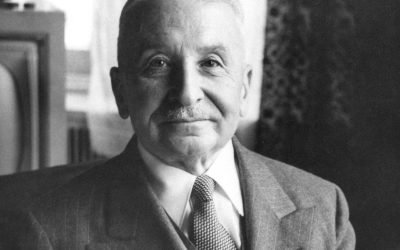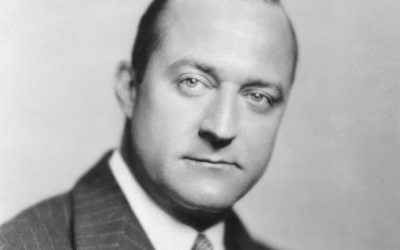In a free market, the prices of products tend to be governed by their costs of production.
This principle follows directly from the uniformity of- profit principle, and we have already glimpsed it in discussing the long-run consequences of repealing price controls. The uniformity-of-profit principle implies that the prices of products tend to equal their costs of production plus only as much profit as is required to afford the going rate of profit on the capital invested. If prices exceed costs by more than this amount of profit, then there is a tendency toward expanded production and lower prices (and possibly higher unit costs). If they fail to exceed costs by as much as this amount of profit, then there is a tendency toward reduced production and higher prices (and possibly lower unit costs). The stopping point is, as I say, where prices equal costs of production plus the amount of profit required to yield the going rate of profit on the capital invested.
Now there are two ways that cost of production governs prices. One way is indirectly—through variations in the supply of the good, as above. The other way is directly—through the decisions of the sellers of the good in setting their prices.
Let us consider first the cases in which the role of cost is indirect—for example, all or most agricultural commodities. In any given year, the price of wheat, or potatoes, or cotton, or whatever, is determined simply by supply and demand. Over a period of years, however, the price of such a good tends to gravitate about its cost of production. This is because whenever the price begins to exceed cost by more than what is required to afford the average rate of profit to the industry, additional capital will be invested, supply will be expanded, and the price and profit will decline. If the price fails to provide the average rate of profit to the industry, capital will be withdrawn, supply will be reduced, and the price and profit will be restored. What ties price to cost in such a case is variations in supply.
However, there is a vast category of cases in which the connection between price and cost is far more direct. This is the case of most manufactured or processed goods. In these cases, the sellers typically maintain inventories of their goods and have plant capacity available to produce more. In such a situation, a rise in demand, provided it is not too large, is met out of inventories, and before the inventory is exhausted, production is stepped up from plant capacity held in reserve. Similarly, when a fall in demand occurs, inventory is temporarily allowed to build up, and production is cut back. Provided the changes in demand are not of major proportions, there is little or no change in price. It can be observed, for example, that the price of bread, automobiles, newspapers, restaurant meals, paper clips, and countless other goods does not change with every change in demand. A change in demand must be fairly substantial to raise or lower the price of these goods. In cases in which the demand changes are not too substantial, they are simply accompanied by corresponding changes in production, while the price of the product remains the same. In cases of this kind, it is not correct to say that the price of the product is determined simply by supply and demand. On the contrary, the price of the product determines the quantity of the product the buyers buy, and the quantity that the buyers buy determines the quantity the sellers produce and sell.
The prices themselves in these cases are set by sellers on the basis of a consideration of costs of production. It is not that each seller sets his price on the basis of his own costs. But some seller in an industry—usually, the most efficient large firm and one that is in a position to expand its production significantly from existing capacity—sets its price on the basis of a consideration of costs, and the other firms are forced to match its price. The other firms cannot exceed its price, because it has the additional production capacity required to supply many of their customers if they should try to sell at higher prices. Nor, as a rule, can the other firms undercut its price, because it is the lowest-cost, most efficient producer, and sets its price accordingly.
The cost of production on the basis of which such a firm sets its price is not primarily its own cost of production, but the costs of production of its less efficient competitors or, if it has no current competitors, the costs of production of potential competitors. It sets its price in such a way as to prevent its competitors from earning too-high profits, because it does not want them to accumulate the capital that would enable them to become more efficient and to expand at its expense. Nor does it want to invite new firms into its field. It wants to avoid creating a situation in which it makes it possible for others to make inroads into its business, which, once started, might lead to its own downfall. It therefore tries to set its price in such a way as to prevent this, which means it tries to set its prices not very far above their costs—as a maximum. At the same time, of course, it strives to reduce its own costs of production even further, so as to be able to expand its own profits and to be able comfortably to meet any price reductions inaugurated by competitors that in the meanwhile may have grown more efficient. It is only when the demand for the product becomes so strong that it is not possible to meet it at a price determined in this way, that the price rises to permit high profits to all in the field.
In the case of manufactured and processed goods, therefore, the direct determinant of price is cost of production.
However, as should already be clear from Chapter 5 of Capitalism: A Treatise on Economics, if we examine costs of production, we find that they are reducible to two things: to the physical quantities of the means or factors of production employed to produce a good and to the prices of those factors of production.29 For example, the cost of producing an automobile equals the quantity of each type of labor employed in turning out a car times the wage rates of that labor, plus the quantity of steel used times the price of that steel, and so on. Now the prices of these factors of production are themselves directly determined either by supply and demand or by cost of production. For example, the wage rates are determined by supply and demand, while the price of steel is determined by cost of production.30 Now the costs of producing steel and all the other elements of an automobile whose prices are determined by cost are themselves resolvable in the same way as the cost of producing an automobile. That is, they in turn are based on prices directly determined by supply and demand and prices directly determined by cost of production.
It should be observed that as we keep pushing the matter back and back, the cumulative role of prices directly determined by supply and demand becomes greater and greater. In the case of our automobile, the production cost of an automobile ultimately depends on the wages of auto workers, the wages of steel workers, the wages of iron miners, and so on, all of which are determined by supply and demand. And, along the way, the prices of some of the materials, such as the copper and zinc the auto companies may have to buy, the raw rubber the tire manufacturers buy, the scrap metal the steel producers need—these prices, too, are directly determined by supply and demand. Ultimately, therefore, as far as it rests on prices, cost of production itself is determined entirely by supply and demand.
Consequently, when prices are determined by cost of production, what they are ultimately determined by is still supply and demand, but supply and demand operating in a wide context—that is, by supply and demand operating in the context of the labor market and in certain broad commodity markets, not in the relatively narrow market of the individual product itself.
Notes
Cf. Eugen von Böhm-Bawerk, Capital and Interest, 3 vols. (South Holland, Illinois: Libertarian Press, 1959), 2:168–76 especially, but also 2:248-56 and 3:97–115; John Stuart Mill, Principles of Political Economy, Ashley ed. (1909; reprinted., Fairfield, New Jersey: Augustus M. Kelley, 1976), pp. 442–68. As previously noted, a lengthy quotation from Böhm-Bawerk, expressing the substance of his views on the relationship between cost of production and prices appears below in chap. 10, sec. 8.
Adapted from Reisman’s Capitalism: A Treatise on Economics, Chapter 6, The Dependence of the Division of Labor on Capitalism, “5. Prices and Costs of Production”




